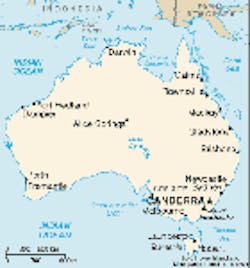Future Water Supplies Seriously Challenged, Say Industry Experts
For the first time in nearly 60 years, Australia’s capacity to secure high-quality water supplies for cities, towns and remote communities is being seriously challenged, a Black & Veatch media forum in Brisbane was told last week.
Speaking at the Black & Veatch Media Dialogue on March 8 at Ozwater ‘10 in Brisbane, Australia, Eamonn Kelly, vice president and managing director of South Asia Pacific for Black & Veatch, said Australia needs to be spend some $30 billion on urban water infrastructure over the next five to 10 years.
The challenge, Kelly said, is dealing with short-term political cycles when long-term planning is needed.
“We need to spot signposts of change as early as possible and give policy makers and politicians expert guidance so that they can react quickly with an understanding of both short-term and long-term consequences,” he said. “We must build flexibility into systems.”
“In Australia and the United States, we are wrestling with the larger issue of sustainable infrastructure and how it is funded, permitted and delivered,” said Peter Binney, vice president and director of sustainable water planning. We can take an adaptation approach, which requires active management with customized programs, or take a more passive and reactive approach. To succeed with an adaptive approach we must undertake sustainability planning outside of crisis situations.”
Binney and Kelly are participants in an ongoing global dialogue that has been established to learn from other experts and to adapt those approaches that are suitable for cities, industry, agriculture and governments in their own service areas.
“A portfolio approach would enable water utilities to select from a range of options to expand, improve and maintain water infrastructure,” Binney said.
Discussions related to water recycling, desalination, water conservation and energy management are part of the ongoing transfer of approaches and experiences that are helping U.S. and Australian water managers address climate change, ecosystem protection and effective operation and funding of water agencies.
Cindy Wallis-Lage, senior vice president and executive managing director of technology solutions for Black & Veatch’s global water business, was at Ozwater ’10 on behalf of the Water Environment Federation and attended the media event.
Wallis-Lage explained that biosolids and nutrients from wastewater treatment wastestreams can be recovered for beneficial uses in order to minimize waste byproducts and maximize resources generated in the wastewater treatment process.
“Technology is enabling the conversion of traditional wastewater plants into resource recovery plants via the recovery of nutrients like phosphorous and the recovery of energy from biosolids,” she said. “The goal is to eventually reach energy-neutral treatment plants.”
Wallis-Lage cited several examples of successful cogeneration projects in Melbourne and Sydney, Australia; Riverside, California; Washington, D.C.; Mesa, Arizona; and a number of U.K. cities.
Source: Black & Veatch
